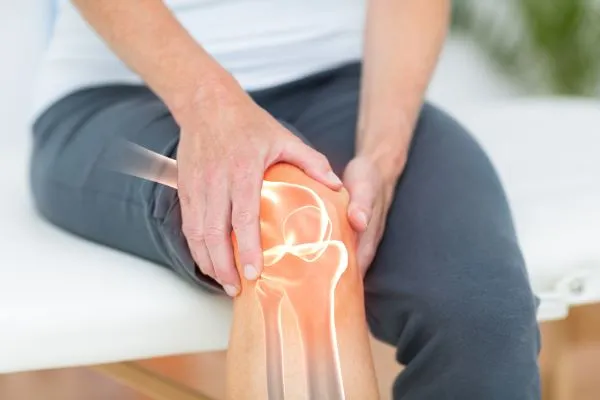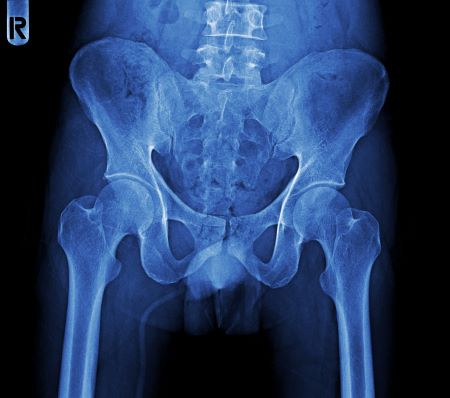Radiology Coding Alert
Identify Key Knee Injury Diagnosis Codes
How do primary and secondary OA differ?
The knee bears the weight of the human body and is susceptible to damage suddenly or over time. That’s why providers frequently use imaging scans to check for sprains, tears, and wear-and-tear damage. As a radiology coder, knowing how to report knee injury diagnoses will help ensure the claim receives reimbursement.
Learn how to choose the correct knee sprain, inflammation, or arthritis diagnosis code below.
Solve Ligament Sprain Coding Confusion
The knee joint features four main ligaments that connect the femur and tibia bones together. Two cruciate ligaments and two collateral ligaments stabilize and strengthen the joint, but are also prone to injuries, such as sprains.
A sprain occurs when ligament or ligaments stretch or tear. While spelled similarly, sprains differ from strains in that a sprain is an injury on the tissues that connect two bones together and a strain is an injury to a specific muscle or a band of tissue that attaches a muscle to a bone.
You’ll assign codes from the following options for a cruciate ligament sprain:
- Anterior cruciate ligament (ACL): S83.51- (Sprain of anterior cruciate ligament of knee)
- Posterior cruciate ligament (PCL): S83.52- (Sprain of posterior cruciate ligament of knee)
You’ll assign one of the following codes for a collateral ligament sprain diagnosis:
- Medial collateral ligament (MCL): S83.41- (Sprain of medial collateral ligament of knee)
- Lateral collateral ligament (LCL): S83.42- (Sprain of lateral collateral ligament of knee)

6th character required: Each of the ICD-10-CM codes listed above carry 6th character required icons in the code set. You’ll need to assign a 6th character that corresponds to the laterality of the diagnosis. Use “1” for a right knee injury, “2” for a left knee injury, and “9” if the provider doesn’t specify which knee.
7th character required: You’ll also need to assign a corresponding 7th character to complete the diagnosis code. For the codes listed above, you’ll choose from the following 7th characters depending on the encounter type:
- A = initial encounter
- D = subsequent encounter
- S = sequela
Scenario: A 32-year-old patient presents to a radiology practice with sharp left knee pain. The patient experienced an injury while playing basketball. The radiologist captured anteroposterior (AP), lateral, and posteroanterior (PA) X-ray views of the patient’s left knee. After reviewing the images, the radiologist then performed magnetic resonance imaging (MRI) of the knee with contrast. After reviewing the MRI images, the radiologist writes their report and documents a left ACL sprain.
In this scenario, you’ll assign S83.512A (Sprain of anterior cruciate ligament of left knee, initial encounter) to report the diagnosis.
Tend to Patellar Tendonitis Dx
Tendonitis is an inflammation of a body’s tendon. Knee tendonitis, better known as patellar tendonitis, occurs when the patellar tendon becomes inflamed from overuse, leg muscle tightness, excess body weight, or misaligned feet, legs, and ankles.
The tendon connects the patella (kneecap) to the tibia (shinbone). Symptoms of patellar tendonitis can include tenderness and pain at the bottom of the kneecap, as well as swelling and a burning sensation.
You’ll assign one of the following codes from the M76.5- (Patellar tendinitis) code subcategory:
- M76.50 (Patellar tendinitis, unspecified knee)
- M76.51 (… right knee)
- M76.52 (… left knee)
Parent code M76.5- features a 5th character required icon, which means you need an additional character to complete the code. In this category, 0, 1, or 2 indicate documented or undocumented laterality.
Scenario: A 23-year-old female patient presents to an urgent care facility with pain and stiffness in her right knee. The patient recently joined an intramural volleyball team at her college. The physician orders X-rays of the patient’s knee, which reveal patellar tendonitis.
In this scenario, you’ll assign M76.51 to report the diagnosis.
Don’t Overthink Knee Osteoarthritis Codes
Patients may also experience knee pain due to osteoarthritis (OA). OA is a degenerative joint disease that occurs over time, typically due to regular wear and tear on the joints. As OA progresses, the joint’s cartilage breaks down and eventually the connecting bones touch. Patients may experience stiffness, swelling, and pain in the joint as a result of the OA.
Several factors contribute to a patient’s OA risk, including age, sex, obesity, genetics, and joint injury or overuse. OA is categorized as either primary or secondary.
Primary OA is the most common form of the joint disease and occurs naturally over time. Secondary OA typically develops following an abnormality in the joint, such as an injury or trauma, inflammatory arthritis, or congenital joint disorders.
“There are no specific codes for primary and secondary arthritis, but now with secondary arthritis, there are specific codes for post-traumatic and secondary osteoarthritis,” said Karen F. Perry, CPC, CPB, CPC-I, OCS, medical coder, during her session, “Current Orthopedic Coding Issues,” at AAPC’s HEALTHCON 2024.
You’ll refer to the M17.- (Osteoarthritis of knee) code category to assign a code that corresponds to the OA type and which knee or knees are diagnosed with the condition.
If the radiologist diagnoses the patient with primary OA in both knees, you’ll assign M17.0 (Bilateral primary osteoarthritis of knee). But if the radiologist finds primary OA in only one knee, you’ll assign one of the following M17.1- (Unilateral primary osteoarthritis of knee) codes:
- M17.10 (Unilateral primary osteoarthritis, unspecified knee)
- M17.11 (… right knee)
- M17.12 (… left knee)
Remember: Code M17.1- carries a 5th character required icon, which means you must use a 5th character to complete the code for the claim.

On the other hand, you’ll select from the following codes when the radiologist documents a secondary OA diagnosis:
- M17.4 (Other bilateral secondary osteoarthritis of knee)
- M17.5 (Other unilateral secondary osteoarthritis of knee)
The ICD-10-CM code set also lists post-traumatic OA codes. These codes are for diagnoses of OA that occurs in a short period of time, usually within a year, in the joint where the patient previously suffered a fracture or dislocation. Similar to the primary OA codes, the post-traumatic OA codes are separated by laterality:
- M17.2 (Bilateral post-traumatic osteoarthritis of knee)
- M17.30 (Unilateral post-traumatic osteoarthritis, unspecified knee)
- M17.31 (… right knee)
- M17.32 (… left knee)
Lastly, you’ll assign M17.9 (Osteoarthritis of knee, unspecified) for an OA diagnosis of the knee when the provider doesn’t specify the laterality or type of OA.
Related Articles
Radiology Coding Alert
- ICD-10-CM:
Identify Key Knee Injury Diagnosis Codes
How do primary and secondary OA differ? The knee bears the weight of the human [...] - Compliance:
Don’t Skimp on HIPAA Sanction Policymaking, Feds Warn
Tip: Ensure employees receive training equivalent to their duties. Stopping a data breach incident and [...] - Reimbursement:
Avoid These 8 Common Medicare Billing Errors to Keep Pay Flowing
Watch those dates of service, MAC addresses, and more. Your provider documented a claim thoroughly [...] - You Be the Coder:
Solve This Swollen Leg Coding Case
Question: A patient presented with swelling from their left knee down to their foot and severe [...] - Reader Questions:
Ask for More Information for Pelvic US Code Selection
Question: I have a radiology report for a female patient that lists the procedure as “Ultrasonography [...] - Reader Questions:
Medicare Ups Conversion Factor … Slightly
Question: Has there been any change to the Medicare Physician Fee Schedule (MPFS) conversion factor (CF)? [...] - Reader Questions:
Deduce the Correct 7th Character for an Elbow Fracture
Question: A patient presented to our radiology practice for a follow-up appointment of their closed nondisplaced [...]




